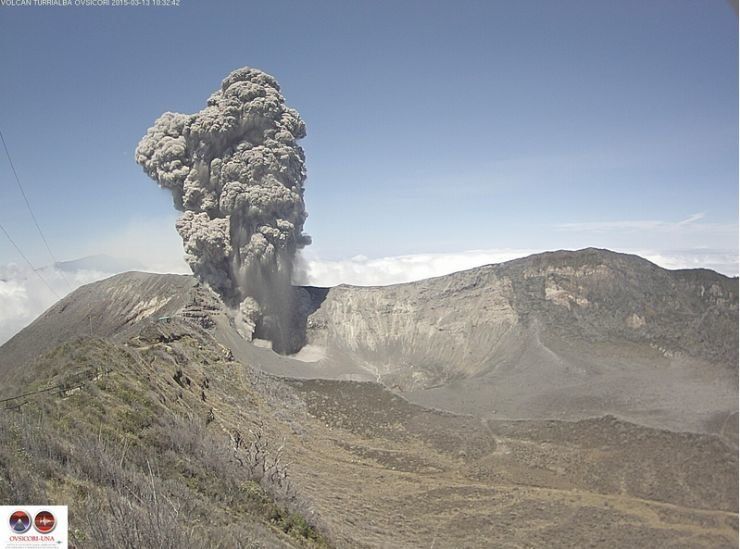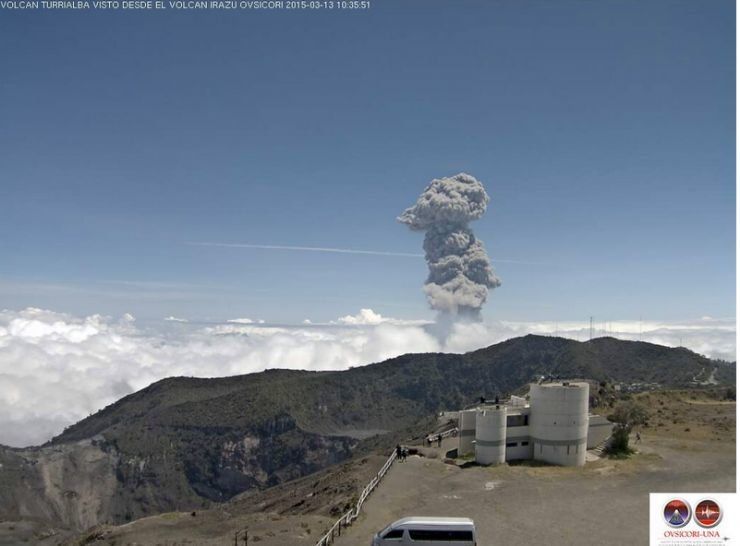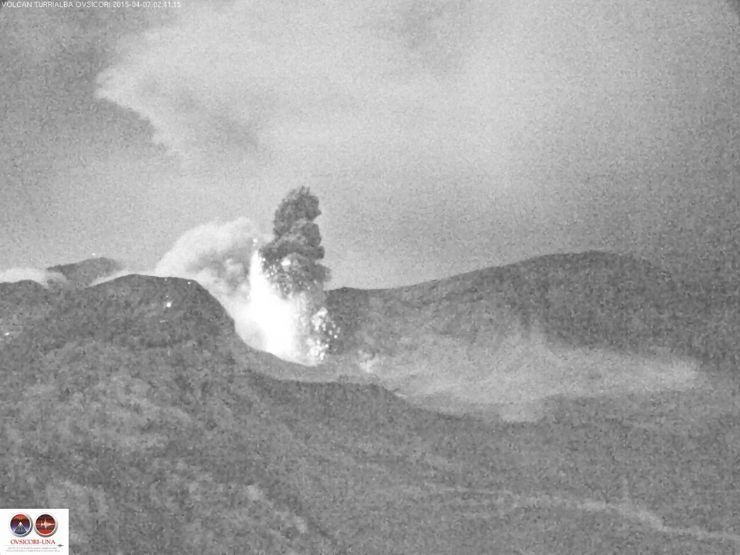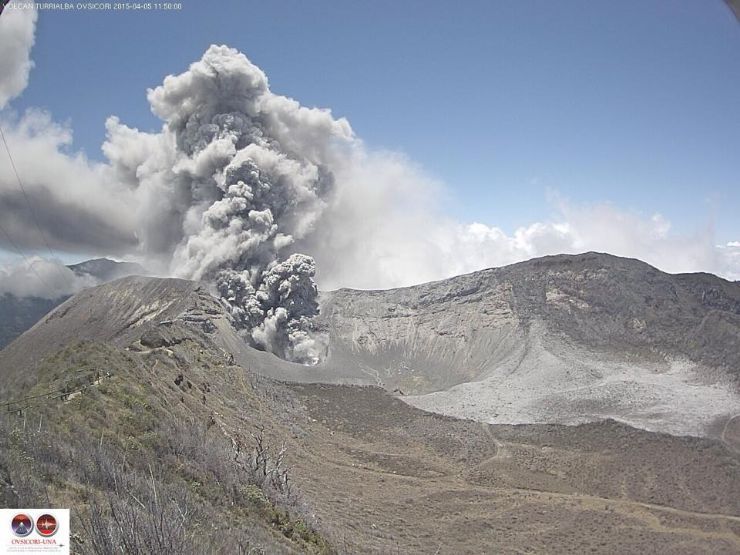
March 13th Biggest Eruption at Turrialba Volcano - Photo Credit: http://www.ovsicori.una.ac.cr
Is the Turrialba yawning and stretching and waking up? What does it mean for Costa Rica if it does? Are local residents in danger? Well, the volcanic eruptions have slowed, but there has been enough activity lately that residents have been concerned. Local law enforcement has recently had to evacuate tourists from the area around the volcano, and geologists have confirmed tremors as a result of eruptions. These eruptions have caused some ash blasts to rise into the air and fall on the surrounding areas. In addition to ash, the volcano eruptions also result in gas and vapor fumes to emit into the atmosphere. The Turriabla volcano has been active since October of 2014, keeping geologists and locals alike completely mesmerized by what is to come next and asking themselves if “the big eruption” is on its way. Residents who see ash are being asked to report it to the National Volcano Observatory, OVSICORI. There have been, at the highest recorded amount, up to 200 tremors a day, since October 2014, as a result of the volcanic activity. The activity is part of a multiyear active log, with recent eruptions dating back to 2010. Before those recorded eruptions, the Turriabla volcano hadn’t seen action in almost 150 years. So far, no actual lava has flowed from the volcano, though there have been reports of rocks that were superheated rocks being thrown into the air.

Turrialba Volcano eruption view from Irazu Volcano - Photo credit: http://www.ovsicori.una.ac.cr
7 Days / 6 Nights
Starting at $779 per person
What it Means
The impacts of a full volcanic eruption can be devastating, but even the small eruptions that Turrialba has seen can cause havoc on the beautiful countryside and cities of Costa Rica. The ash that has spewed out has fallen not only on areas that are close by, but also to areas that are unfortunately in the path of the wind. The ash fall can damage or even kill crops and livestock, impacting the country’s economy. Volcanic activity can also have an impact on tourism, since the ash fall can – and has – closed down airports and restricted flights in and out of the country. If tourists are afraid to travel to Costa Rica, or if they just plain aren’t able, several local businesses can be impacted. It’s not just the hotels that would be affected either – it is also tour companies, restaurants, and bars. The volcanic eruptions don’t just impact the economy though, they also impact education. Areas that are impacted by the eruptions, or the resulting earthquakes, are forced to cancel school for days, or even weeks at a time. There is also the risk of dangerous mudslides that could threaten the lives of local residents.

Turrialba Volcano night eruption with lava - Photo credit: http://www.ovsicori.una.ac.cr
History of the Turrialba Volcano
The volcano is in the Cartago Province, and it reaches 10,958 feet. The summit itself has sulfur pits, and visitors are able to hike to some of the craters during periods of inactivity. The more recent activity has left many of the areas of the volcano limited or closed off to the public, for their own safety. The volcano itself rests within the surrounding area, the Turrialba Volcano National Park. Historically, this volcano has been active. It has erupted, or at the very least, had some emission of ash, during the 19th century. Then, it was reported that there was activity that increased in the last 1990's. Since then, there have been some reports of increased activity in the 2000's, but nothing like the ash and rock eruptions and that have been happening since late 2014, and continuing into early 2015.
Be Safe!
If you are in the vicinity of the volcano, be safe! Listen to local authorities, and evacuate without resistance if asked to do so. Remember that you need to protect yourself first, and that any footage of the volcanic eruption can certainly be found online.

April 5th, 2015 big eruption at Turrialba Volcano - Photo Credit: www.ovsicori.una.ac.cr

